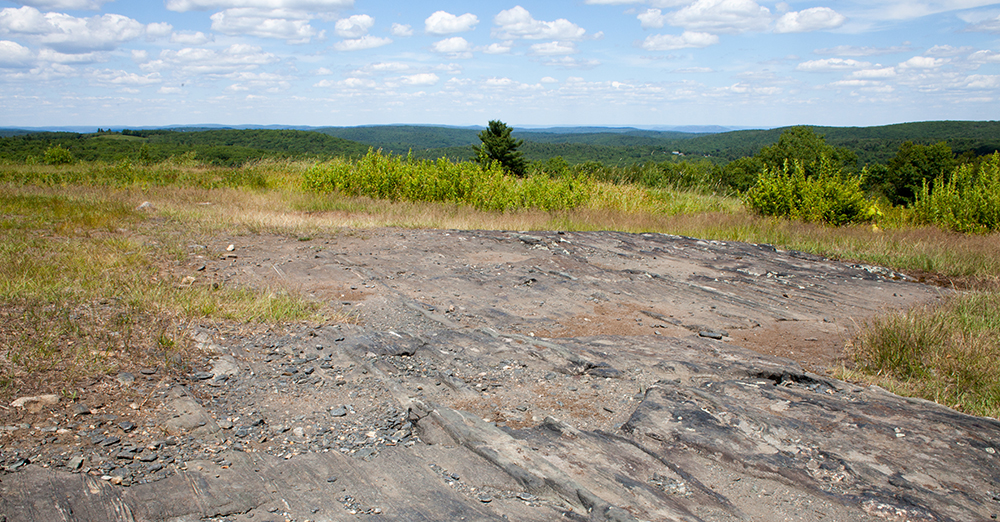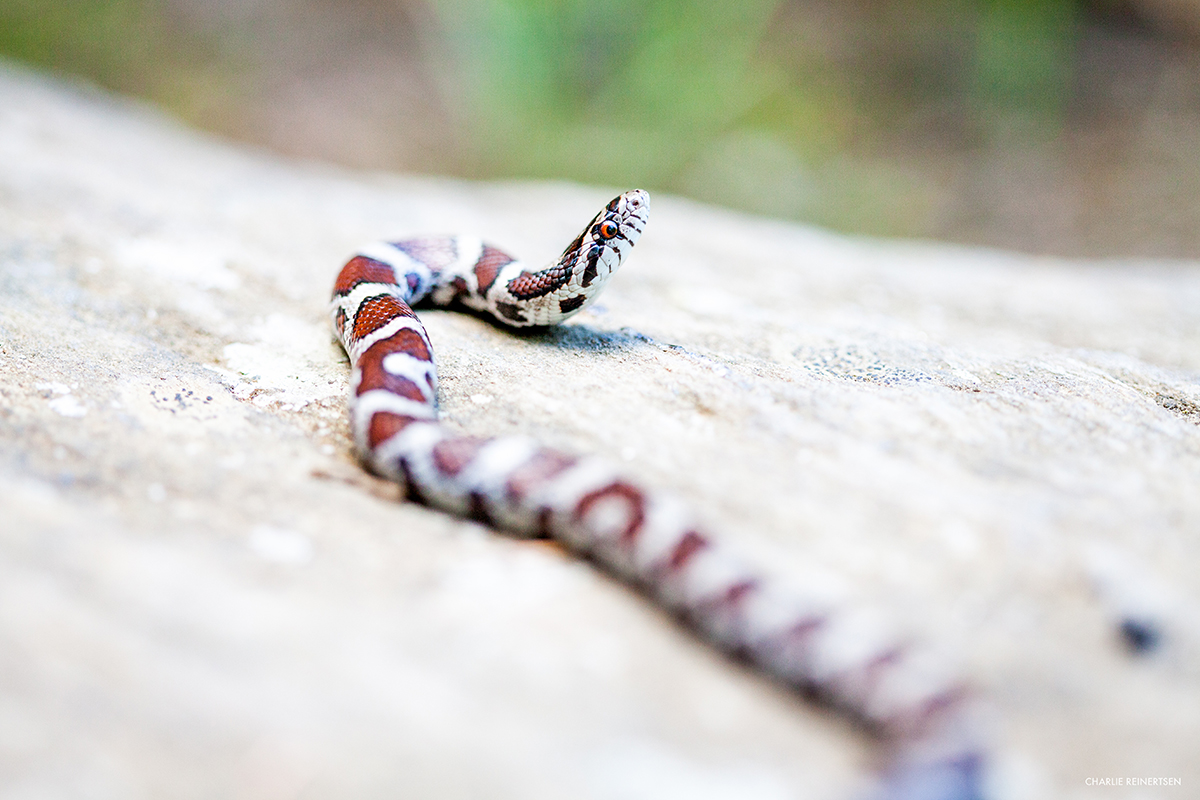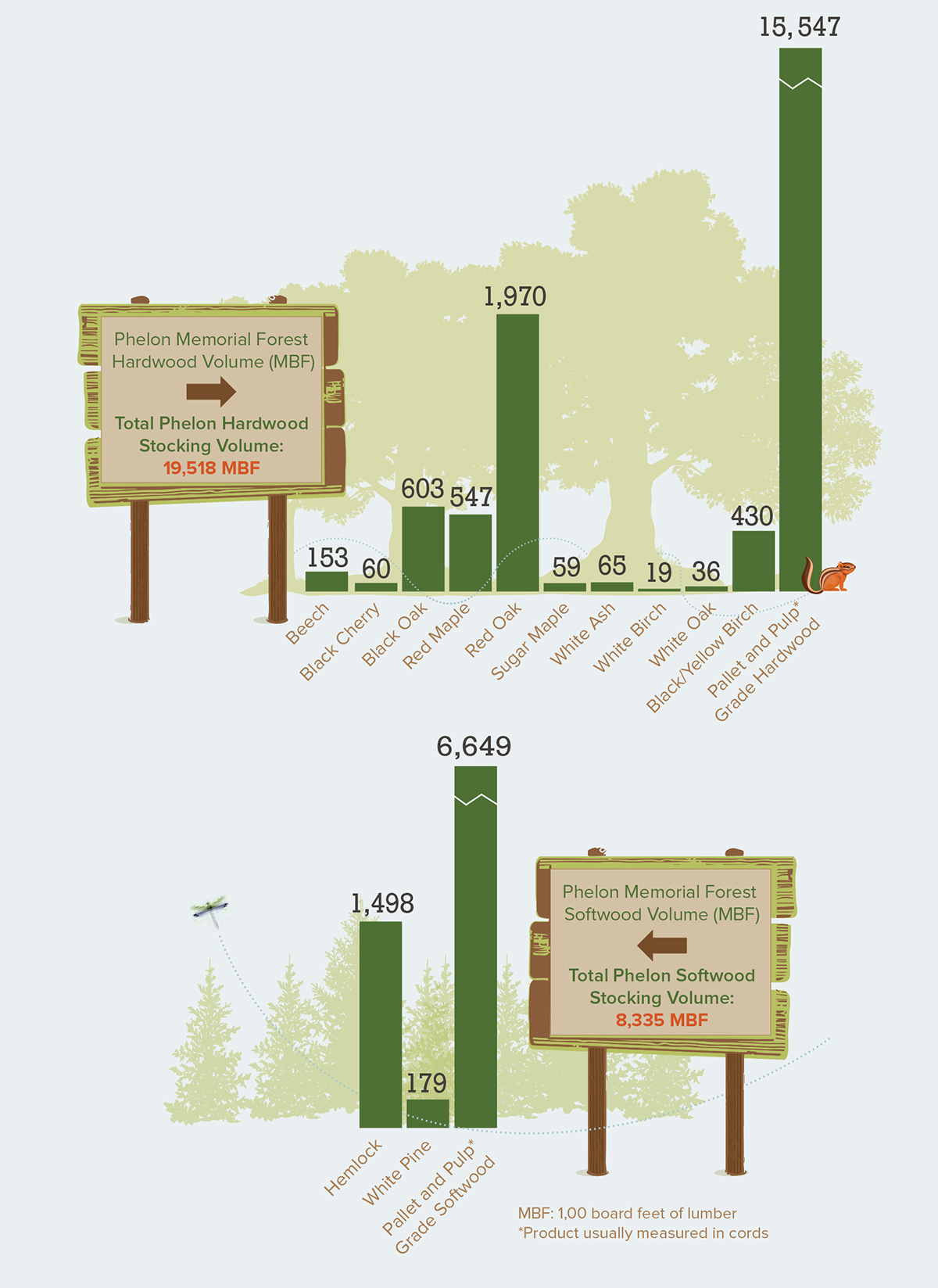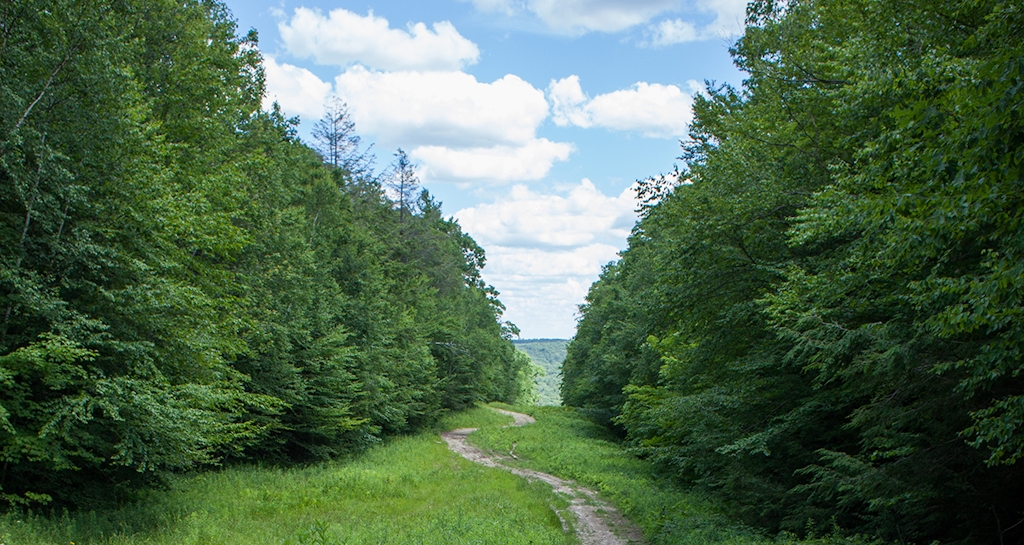Location: Granville, MA | Size: 945 Acres | Amenities: Trails, Parking, Scenic Vistas, Rivers and Streams
Writing by Tinsley Hunsdorfer, photography by Charlie Reinertsen
Located a few miles from Tolland and Granville State Forests in southwest Massachusetts, NEFF’s Phelon Memorial Forest is a beautiful property with deep woodlands that open up to astonishing views, all interwoven with a trail system ready to carry visitors to a range of fascinating features.
The property’s 1,487-foot summit allows visitors to see into five different states on clear days, and it becomes an even more awe-inspiring spot during seasonal raptor migrations, when birders and field biologists settle into the hillside to count birds and watch a wonder of the natural world unfurl. Hawks like the Broad-winged Hawk, Sharp-shinned Hawk and Red-tailed Hawk make up the bulk of the hill’s sightings, and birders on the hill once counted 2,406 migratory Broad-winged Hawks on a single day. Phelon Memorial Forest is mostly made up of hardwoods like oaks, maples and birch, which also means the forestland is a great place to witness another set of seasonal changes—spring leaves unfurling and autumn leaves taking on flame-like hues.

The view from Phelon Memorial Forest’s summit and hawk-watching hotspot
These hardwood stands make the property an excellent proving ground for NEFF’s new Exemplary Forestry standards for Central and Transition Hardwoods. Hardwood forest types play a big role in the standards because southern New England represents the transition area between the Acadian Spruce-Fir forests to the north and the deciduous (hardwood) forests to the south. Phelon is primarily made up of Oak-Pine, Hemlock, and Oak-Hickory—although it’s low on the hickory—forest types, or three of the five types accounted for by the Central and Transition Hardwoods standards.
Visitors can get a look at these types from Phelon’s trail system, which leads through dense hemlock stands, regenerating hardwood patches and mixed oak-pine stands, and then continues on to intermittent streams, a perennial stream and waterfall, and two overlook points. While exploring the woods, visitors should keep an eye out for signs of wild animals. Raptor migrations aren’t the only interesting wildlife happenings at Phelon.
Simply by being managed to Exemplary Forestry standards, Phelon Memorial Forest provides excellent forest wildlife habitat, or as forester Tony Lamberton put it in the Phelon management plan he created for NEFF, “this property has a high diversity of species because of the diversity in the forest structure.” Phelon has varied forest habitat types, ranging from early and mid-successional forests to mature hemlock stands—and these types have additionally been managed to contain a range of tree ages and sizes. Foresters working at Phelon have heard Ruffed Grouse drumming, observed turkeys and heard their mating calls, and seen signs of moose and deer. NEFF staffers have observed a number of native birds, reptiles and amphibians.

A snake at Phelon Memorial Forest, photo by Charlie Reinertsen
Since NEFF took ownership of the full property in 1984, there have been 10 harvests on Phelon Memorial Forest. Harvesting has been a mix of intermediate thinning earlier in NEFF’s ownership combined with some regeneration harvests more recently. Since 1999, Exemplary Forestry management has doubled stocking on the property from 10 to 20 cords per acre, while NEFF simultaneously harvested more than one million board feet and 1,751 cords of firewood (see below for details about the wood volume at Phelon). That’s enough wood to frame 66 houses. So, not only has in-forest carbon sequestration doubled under NEFF’s management, but additional carbon has also been stored in the products made from Phelon-harvested wood, and all while creating a diversity of wildlife habitats across the property.
These characteristics make Phelon an excellent real-world example of NEFF’s 30 Percent Solution, a forest-based approach to mitigating climate change that combines four key strategies: preventing net loss of forests, spreading the practice of Exemplary Forestry, replacing steel and concrete with low-carbon construction, and storing carbon in wood buildings.
NEFF’s analysis of this approach in New England shows it could keep more than 646 million metric tons (0.65 gigatons) of CO2 out of the atmosphere over the next 30 years, or nearly one-third of the total energy-related CO2 emissions New England needs to eliminate over the next several decades. The 30 Percent Solution would simultaneously improve wildlife habitat, allow continued forest recreation, improve the quality and affordability of urban housing, and more.
Blueberries and the Creation of Phelon Memorial Forest
Phelon Memorial Forest is the result of two separate donations made by Mr. Douglas M. Rice and Mr. Russell E. Phelon. Mr. Rice made the first gift when he donated 40 acres—then called the Holden-Rice Memorial Forest—to NEFF in 1973. Mr. Phelon went on to donate his nearly 1,000-acre adjacent property to NEFF in 1984. He wanted the forestland to remain productive while also maintaining a blueberry crop on its open acres.
NEFF has accomplished Mr. Phelon’s goals through the Exemplary Forest management outlined in this story and by leasing acres devoted to blueberries to a commercial grower. By providing just enough distance between Phelon’s scenic viewpoint and the surrounding forestland, those very same blueberry fields are what make Phelon’s hawk-watching and long-distance views of the landscape possible, which is why the summit has come to be known as Blueberry Hill.
Hardwood and Softwood Volume at Phelon
NEFF conducted a timber inventory of Phelon Memorial Forest in 2021, a process that produces an estimate of the total volume of wood growing on a property per species for larger trees, and per product type for young trees too small to be used for sawlogs. The results are available below in a graphic and then in plain text.

Hardwood Volume (MBF)
Beech: 153
Black Cherry: 60
Black Oak: 603
Red Maple: 547
Red Oak: 1,970
Sugar Maple: 59
White Ash: 65
White Birch: 19
White Oak: 36
Yellow/Black Birch: 430
Pallet and Pulp Grade Hardwood*: 15,547
Total hardwood volume: 19,518
Softwood Volume (MBF)
Hemlock: 1,498
White Pine: 179
Pallet and Pulp Grade Softwood*:6,649
Total softwood volume: 8,335
MBF: 1,00 board feet of lumber
*Product usually measured in cords


